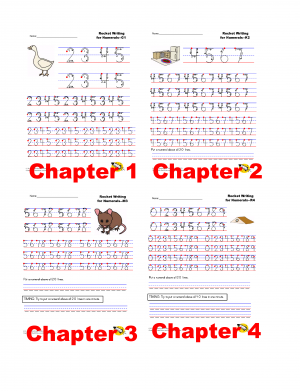Principal Luebke writes:
Dr. Don,
We have some fast Rocket Math students at our school. We want them to keep working and improving all the time. I want some students to start the skip counting function. What is the correction procedure while practicing? Do the checkers say the next number is ___, start over? Thank you,
Dr. Don answers:
Great question! There should have been some special directions in the Skip Counting Drawer for teachers. I fixed that this morning. Here’s what I posted there.
How Students Should Practice SKIP COUNTING
Students should practice by saying the skip counting series in order from memory. They learn the harder series in parts, so they only have to say the part they are learning at that point. For example, in Set G students are to learn the first four numbers of the count by 9s which are 9, 18, 27, 36. When practicing in Set G, the checker says: “Count by 9s to 36.” [That’s exactly what it says on the little cloud at the base of the rocket, making it easy for the checker!] The student then says, “Nine, eighteen, twenty-seven, thirty-six.” Of course, in Set H the student says the 9s to 63, and then in Set I all the way to 81.
Saying series in the same order every time is very important as it creates the verbal chain. Eventually, after many repetitions, an amazing thing happens. Whenever the student starts to say the first part of the skip counting series the rest of the series will pop into mind unbidden. (I try to use the word “unbidden” at least once in everything I write – just because I can.) This automatic coming-to-mind is called “automaticity” and is the goal of practice.
The student should say the series in order without any hesitation. I really mean NO hesitation! Now I will say that a few different ways to prove that I am really serious. I want students to practice these series until they are as automatic as saying their name. If even a slight pause is needed to think of the answer, I want them to practice until it comes to mind without any effort at all. This will enable them (after these series are learned) to easily learn multiplication facts and go on to concentrate on the higher functions of math.
CORRECTION: Each time an error or hesitation is made, the helper/checker should follow the following correction procedure. It is really important to do this correction procedure. The correction procedure is part of that “secret important stuff” that makes Rocket Math work.
1. Helper states the whole series up to that number, for example: “Nine, eighteen, twenty-seven, thirty six.” (If the student has said the right answer but hesitated somewhere in the middle, the helper can confirm it by saying, “Yes, that was right, but you hesitated, so let’s practice that some more. Nine, eighteen, twenty-seven, thirty-six.”
2. After the helper says the series once, the helper and the student should say the series together twice. “Say it with me: Nine, eighteen, twenty-seven, thirty-six. And again, nine, eighteen, twenty-seven, thirty-six.” Then have the student repeat the skip counting series three times.
3. Go back and do the previous series [just one, not three!], which is enough so this series comes up again before the student forgets it. (Rinse and repeat as necessary.)
Note that this same correction procedure is to be used each time there is an error or hesitation. If the student hesitates again after they went back one series and started again, just repeat the correction procedure. Say it together twice, then three times without help, go back one series and start again. Repeat this practice until there is no hesitation. Extra practice on a series, to lock it into memory, is important work and should not be considered a bad sign. THAT is what we are doing here—LEARNING!!










